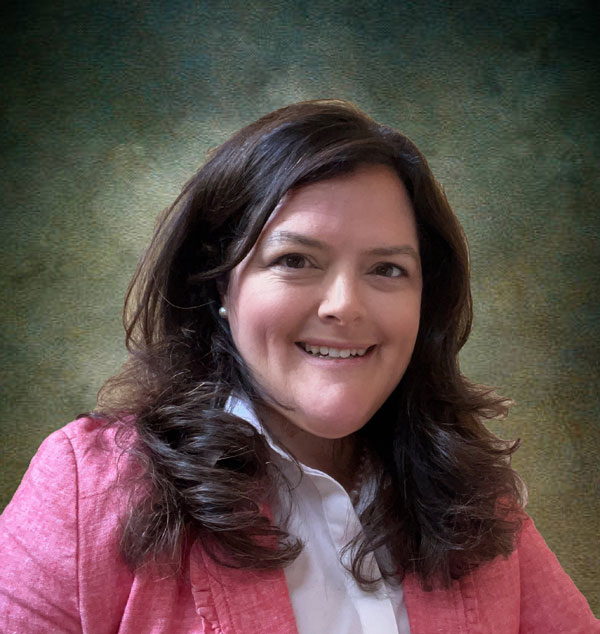Catching up with the Chief Technology Officer
Picataggi aims to empower the community to use technology and be successful
The year 2020 started off just like any other year. For William & Mary Information Technology, the kickoff to the new year involved a major reorganization of the department that would, for the first time, create a technology team under the university's inaugural Chief Technology Officer, Corinne Picataggi. 
Before the reorganization, Picataggi was IT’s Director of Enterprise Systems. At the time, there was a desire among university leadership to modernize campus at a faster rate. To reach this goal, Picataggi knew some changes in leadership and organizational structure of IT needed to happen. She worked with other university and IT leaders to form the role of the CTO. She also used her technical background to optimize a new organizational structure that would support the university’s ambitious goals.
The change saw the CRM, infrastructure and engineering teams join application administration and enterprise systems to form what is now the technology team. By bringing these key technical teams under one leader, the responsibility of the team shifted to not only getting work done but to raising the technology acumen of the university and empowering users to do more.
The CTO’s organization supports all core technology at the university, including network and telecommunications infrastructure, construction, maintenance, server and platform architecture, cloud strategy, enterprise systems administration, integration and automation. Additionally, business analysts, project managers, and solutions architects support IT team members and colleagues in functional offices, plan, prepare, and implement process improvement and technology modernization initiatives.
“In the past, IT has always been the team that executes technical work, but that model is not sustainable,” said Picataggi. “Demand will always exceed capacity, and in order to innovate at the rate the university expects, wants and needs, we need to empower our users to do more.”
Armed with big ideas and bigger questions, Picataggi was ready to make moves in 2020, but before she could really get her footing, the COVID-19 pandemic brought everything to a screeching halt.
As Picataggi saw university leadership begin to address the challenges of bringing teaching, working, and learning online while prioritizing the safety and health of the W&M community, she recognized an undeniable need that she couldn't turn a blind eye to. She saw that systems needed to be put in place for contact tracing, identifying exposures, housing infected students and so much more. The entire community needed to be tested regularly, and we needed systems in place and people to aid in this effort.
After surfacing concerns about the university’s ability to scale as the virus did, Picataggi pitched innovative ideas on how W&M could manage. As a result, she was made a member of the Public Health Advisory Team, the team that managed isolation and quarantine housing, and the Covid Response Team and was given the operational title, Director of Health Logistics. Some of the biggest components to keeping the community safe were led by Picataggi and backed by the expertise of the newly formed technology team. "Because of this new organizational structure, I was able to confidently tackle that COVID work,” she said. “My team covered the day-to-day stuff. Health Logistics never would have been as successful had the reorganization not happened.”
Now with three years of COVID behind her, Picataggi feels like she is finally coming into the CTO role. "I know it has been a few years since the reorganization but for me it feels like two months ago because COVID was this huge gap. I am revisiting conversations and work from January 2020 that were put on pause. It’s an exciting time and what we are tackling right now is very rewarding.”
As someone who is always thinking of new ways to innovate, Picataggi has an idea of creating a technology standard that will empower W&M IT’s functional partners to use technology to do more in their work. “This is an experiment of sorts,” she said. “I’ve never heard of a university approach technical work in this way, but I am confident it will help W&M achieve our goals. It shows we are transforming as an institution and reimagining how we do work and who can do work.”
The technology team also has several projects underway to maximize the university’s investment in existing technology assets without increasing spend, something Picataggi is passionate about. For example, in the last year Picataggi and her team have led the retirement of alumni email, moved student email from Gmail to Outlook and kicked off a project to retire local network storage and move storage to the cloud.
Another project that Picataggi and her team are spearheading is an Enterprise Resource Planning (ERP) effectiveness evaluation, which is the software system (Banner) that manages the university’s main business processes, like HR, finance and more. The team has already moved Banner to the cloud, and Picataggi is looking forward to introducing more automation, as well as tools we can use to build community, increase collaboration and share institutional knowledge.















